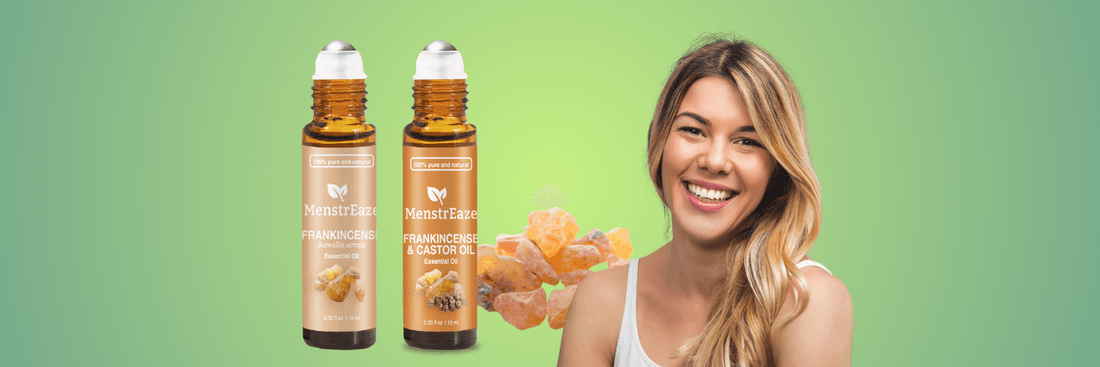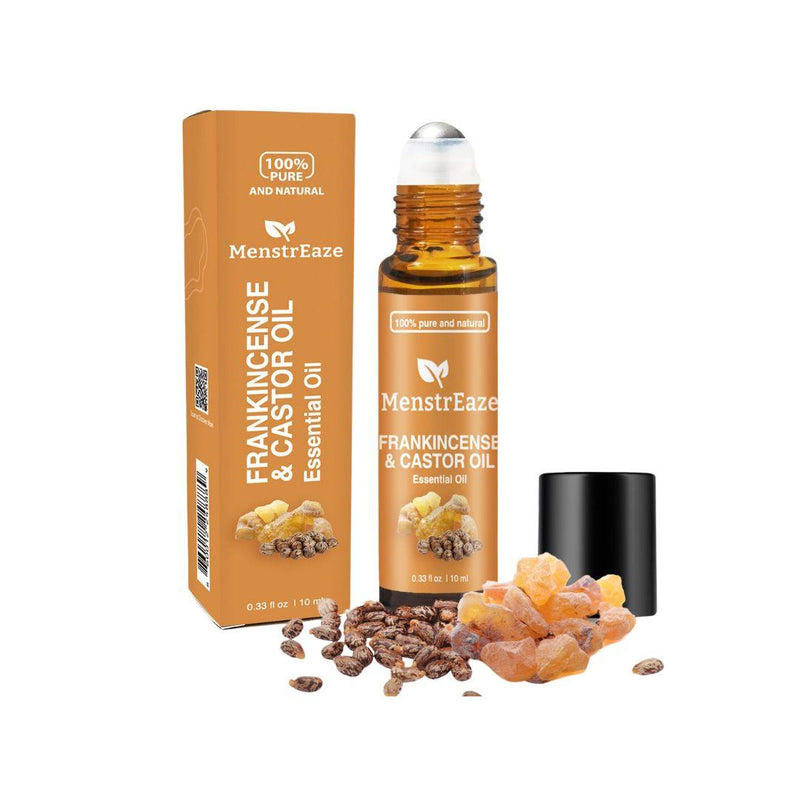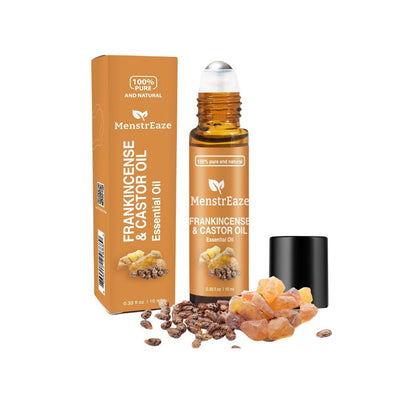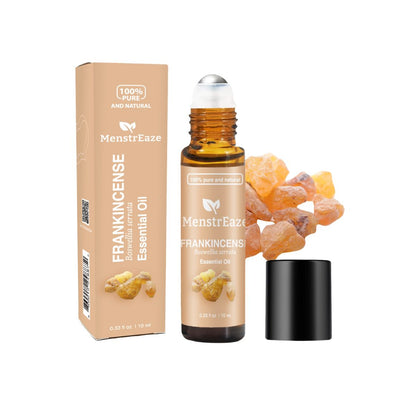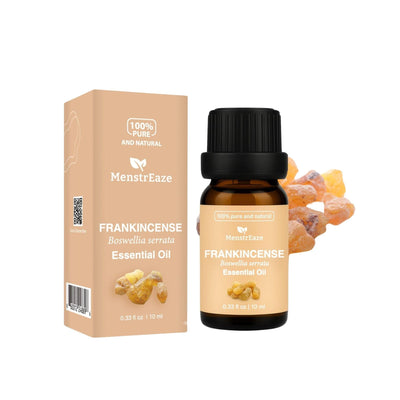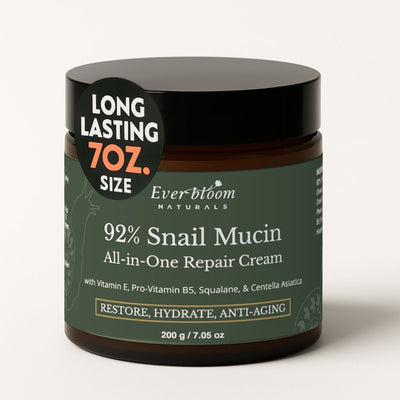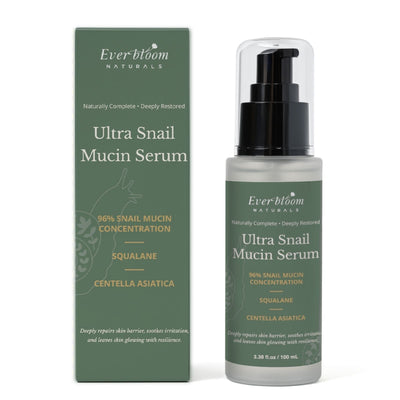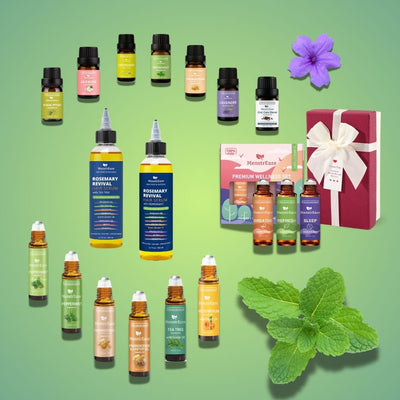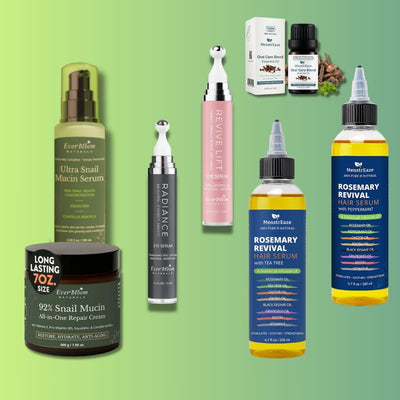Derived from the aromatic resin of the Boswellia tree, frankincense oil holds a revered place in history. For centuries, it has been treasured as a precious commodity, even offered as a gift by the Magi, signifying its immense value [1]. Beyond its historical and spiritual significance, frankincense has a long-standing tradition in both medicine and beauty rituals, with ancient Egyptians utilizing it in perfumes and skin-soothing salves [2]. Today, there's a significant resurgence of interest in frankincense oil within the modern skincare world. Many are drawn to its potential for promoting a radiant and youthful complexion, seeking natural alternatives to address various skin concerns [3]. If you're curious about how to incorporate this age-old remedy into your daily routine, you've come to the right place. This expert guide will delve into the wonders of frankincense oil for face and provide you with a comprehensive understanding of how to use frankincense oil on face for optimal results.
The Amazing Benefits of Frankincense Oil for Your Face

Frankincense oil boasts a remarkable array of benefits for facial skin, many of which are supported by scientific exploration. This makes it a compelling addition to any skincare regimen for those seeking natural solutions.
One of the key advantages of frankincense oil is its ability to refine the skin's surface. It can effectively reduce the size of pores, leading to a smoother and more polished appearance [4]. Furthermore, it actively works to promote an even skin tone and texture, contributing to a more harmonious and balanced complexion [4]. Beyond refining texture, frankincense oil is known to increase the skin's natural radiance, helping you achieve a healthy and vibrant glow [3]. It also plays a crucial role in protecting the skin from environmental damage, acting as a shield against daily aggressors that can lead to premature aging [3].
For those struggling with dryness, frankincense oil offers significant relief. It has the capacity to lock in moisture for dry skin, preventing dehydration and promoting a supple feel [3]. Additionally, it can be effective in relieving itching and flaking, soothing discomfort associated with dry and irritated skin [3]. Its antiseptic properties make it a valuable ally for acne-prone skin, as it helps to control bacteria that can contribute to breakouts [1]. This can lead to a clearer and healthier complexion over time.
The oil is also rich in antioxidant and anti-inflammatory properties, which are fundamental for maintaining skin health [1]. These properties enable it to reduce redness and swelling, common symptoms of various skin irritations, and effectively fight free radicals, unstable molecules that can damage skin cells and accelerate aging [1].
Furthermore, frankincense oil contributes to the skin's overall vitality by improving skin elasticity and actively promoting skin hydration, resulting in a more supple and youthful feel [3]. It is also recognized for its ability to reduce the appearance of wrinkles, scars, and discoloration, making it a potent ingredient in anti-aging formulations and for improving the overall appearance of the skin [1]. Furthermore, it boosts collagen production, a vital protein for skin structure, leading to a plumper and more resilient complexion [1]. For those with oily skin, frankincense oil can be particularly helpful as it regulates sebum production, preventing clogged pores and the formation of spots [1]. It also works to tone and brighten skin, effectively reducing blemishes and promoting a clearer and more even skin tone [1]. Finally, its astringent properties contribute to a tighter skin feel, further enhancing a youthful appearance [1]. As an added benefit, the calming and soothing scent of frankincense oil can also promote relaxation and overall well-being [1].
How to Use Frankincense Oil on Your Face: Different Methods

While frankincense oil offers numerous benefits, it's crucial to remember that it is a potent essential oil and should always be diluted with a carrier oil before applying it to your face [1]. Direct application of undiluted essential oils can lead to skin irritation and sensitivity. ManukaRx explicitly advises against applying frankincense oil directly to the face due to the potential for redness and rough patches [1]. A general guideline is to start with 1-2 drops of frankincense oil per teaspoon of your chosen carrier oil [1].
Here are several effective methods to incorporate diluted frankincense oil into your skincare routine:
- Direct Application with a Carrier Oil: This is the most straightforward method. After cleansing your face, mix the recommended dilution of frankincense oil with your chosen carrier oil in the palm of your hand. Gently massage the blend onto your face and neck using upward strokes. This can be done as part of your morning or nighttime routine [1].
- Enhancing Your Moisturizer: For an added anti-aging benefit, you can mix a single drop of frankincense oil with a small amount of your regular facial moisturizer in your hand before applying it to your face [13]. This allows you to enjoy the benefits of frankincense alongside the hydrating properties of your chosen cream or lotion.
- Creating a Face Serum: You can create your own potent face serum by adding a few drops of frankincense oil to a carrier oil like jojoba or argan oil [13]. These oils are gentle and won't typically clog pores. Mix well in a small bottle and apply a few drops to your face after cleansing, ideally at night [13].
- Adding to a Clay Mask: Boost the benefits of your favorite clay mask by incorporating a drop of frankincense oil before applying it to your skin [13]. Clay masks are excellent for cleansing, and frankincense oil can add its rejuvenating and soothing properties to the treatment.
- Targeting Specific Areas: For concerns like age spots or minor blemishes, you can apply a drop or two of diluted frankincense oil directly to the affected area [13]. However, it's crucial to perform a patch test on a less visible area, like the inside of your elbow, at least 24 hours beforehand to check for any sensitivity [13].
Choosing the Right Carrier Oil for Your Skin
Carrier oils play a vital role in safely and effectively using essential oils like frankincense on your face. They help to dilute the potent essential oil, reducing the risk of skin irritation, and also aid in its absorption into the skin [1]. Different carrier oils offer unique benefits and suit various skin types.
Here's a guide to help you choose the best carrier oil for your needs:
|
Skin Type |
Recommended Carrier Oils |
Benefits |
|
Oily Skin |
Lightweight, absorb quickly, help balance sebum production. |
|
|
Dry Skin |
Castor oil [1], Fractionated Coconut oil [1], Argan oil [1], Sweet Almond oil [1] |
Rich in moisturizing properties, help to hydrate and nourish dry skin. |
|
Sensitive Skin |
Castor oil [1], Jojoba oil [1], Sweet Almond oil [1], Argan oil [1] |
Gentle, non-comedogenic, soothe irritation, provide hydration without clogging pores. |
|
Mature Skin |
Rich in antioxidants and vitamins, promote collagen production and hydration. |
|
|
Combination Skin |
Help balance oil production without feeling greasy. |
Important Precautions and Potential Side Effects
Safety should always be a top priority when using essential oils. Before applying frankincense oil to your entire face, it's essential to perform a patch test [1]. Apply a small amount of the diluted oil to a discreet area, such as your inner forearm, and wait 24 hours to observe for any adverse reactions like redness, itching, or irritation.
It's crucial to avoid using undiluted frankincense oil directly on the face [1]. As ManukaRx points out, this can lead to irritated skin reactions, including redness and rough patches [1]. Potential side effects of using frankincense oil on the face can include skin irritation, rashes, and itching [1]. In rare cases, allergic contact dermatitis can occur [107].
Pregnant and breastfeeding women should exercise caution and ideally avoid using frankincense oil due to the potential for stimulating the uterus or passing into breast milk [1]. It's always best to consult with a healthcare professional before using any essential oils during these times [1]. Individuals with underlying skin conditions or those taking medications, particularly blood thinners or diabetes medications, should also seek advice from their doctor before incorporating frankincense oil into their skincare routine, as potential interactions may occur [1].
How Often Can You Safely Use Frankincense Oil on Your Face?
When introducing frankincense oil to your skincare routine, it's wise to start with less frequent applications to observe how your skin responds [1]. Applying it once every other day or a few times a week initially can help you assess your skin's tolerance. For many individuals, daily use of diluted frankincense oil is possible once they have established good tolerance and are using it correctly with proper dilution [1]. Holland & Barrett suggests using approximately 6 drops of essential oil per ounce of carrier oil for face products as a general guideline [41]. Ultimately, the best frequency will depend on your individual skin's needs and reaction.
Is Frankincense Oil Right for Your Skin Type?
One of the appealing aspects of frankincense oil is its general suitability for a wide range of skin types. It's often considered beneficial for all skin types, including dry, sensitive, oily, and combination skin [1]. However, its specific properties can offer targeted benefits for different skin concerns:
- Oily Skin: Frankincense oil's astringent properties can be particularly advantageous for oily skin as it helps to balance sebum production, potentially preventing clogged pores and breakouts [1].
- Dry Skin: For dry skin types, frankincense oil can help to moisturize and hydrate, improving the skin's ability to retain moisture and relieving dryness, itching, and flaking [1].
- Sensitive Skin: Frankincense oil is often considered gentler than other essential oils and can help to soothe redness and irritation due to its anti-inflammatory properties [1]. However, it's still crucial to dilute it properly and start with a small amount to see how your skin reacts.
- Mature Skin: This skin type can greatly benefit from frankincense oil's ability to boost collagen production and its overall anti-aging benefits, helping to reduce the appearance of wrinkles and fine lines [1].
- Combination Skin: Those with combination skin can find frankincense oil helpful for balancing oil production in different areas of the face, addressing both oily and dry patches [1].
What the Experts Say: Dermatological Advice on Frankincense Oil
While frankincense oil has gained considerable popularity in skincare, dermatologists offer valuable perspectives on its effectiveness. There's a growing acknowledgment of its potential benefits, with some research indicating its anti-inflammatory properties and ability to improve skin elasticity [7]. Some experts have noted anecdotal evidence suggesting that topical application of frankincense and boswellia may help with skin inflammation and could be beneficial for individuals with skin disorders like eczema [7].
Dermatologist Dr. Marisa K. Garshick mentions that frankincense contains terpenes, which may help detoxify and control sebum levels in the skin, making it potentially beneficial for oily and acne-prone skin [11]. She also suggests it can increase skin elasticity, improve signs of photoaging, and promote skin firmness [81]. Some research even indicates that frankincense oil might offer some protection against sun-related aging [6].
However, it's important to note that many dermatologists emphasize the need for more large-scale clinical studies to definitively confirm all the claimed benefits of frankincense oil for the skin [6]. Dr. Melanie Palm points out that while Ayurvedic medicine has a long history, there are currently no published studies specifically examining the benefits of boswellia or frankincense on the skin [81].
Therefore, while there's promising anecdotal evidence and some preliminary research, it's generally advised to understand your individual skin type and tendencies and to consult a dermatologist before fully incorporating frankincense oil into your skincare routine, especially if you have any existing skin conditions or concerns [1].
Real Users, Real Results: Reviews and Testimonials
To gain a broader understanding of how frankincense oil works for different individuals, let's explore some user reviews and testimonials. Many users have reported positive experiences incorporating frankincense oil into their facial skincare routines. Some have noticed softer, smoother, and more hydrated skin after regular use [50]. Several reviewers have mentioned a visible reduction in the appearance of wrinkles, fine lines, scars, and blemishes [45].
Many users opt to mix frankincense oil with various carrier oils, such as castor oil, jojoba oil, and coconut oil, often using these blends as nighttime facial treatments [45]. One user specifically noted its effectiveness in reducing facial swelling and puffiness [45]. The pleasant fragrance of frankincense oil is also frequently highlighted in positive reviews [51].
However, it's important to acknowledge that not all experiences are universally positive. Some users have reported a strong or unpleasant smell, with descriptions ranging from gasoline-like to resembling cow manure in certain brands [84]. One reviewer experienced burning and irritation after use [86], underscoring the importance of dilution and patch testing. Another user found the scent to be different from their expectations [84]. These mixed reviews emphasize that individual experiences with frankincense oil can vary, and factors like product quality and personal sensitivity play a significant role.
Discover the Power of Frankincense for Radiant Skin & Calm Living
Elevate your daily rituals with our trio of essential oil blends—each crafted with pure Frankincense and skin-loving botanicals. Whether you're targeting fine lines, soothing tired eyes, or seeking a moment of calm, these compact, clean formulas deliver visible results and sensorial relief—anytime, anywhere.
🌿 Frankincense & Castor Roll-On
Wrinkles & Dark Circles | 10ml | 25 Reviews
Brighten, hydrate, and de-puff with this clean, travel-ready roll-on.
- 💧 Deep moisture with Castor Oil
- ✨ Brightens & evens skin tone
- ❄️ Cooling stainless steel roller
- ✅ Toxin-free & sensitive-skin safe

✨ Frankincense & Grapeseed Dropper
Skin, Massage & Candle Making | 10ml | 5 Reviews
A multipurpose oil for skin, stress relief, and sensory rituals.
- 🌿 Clears blemishes & softens skin
- 🧘♀️ Calms mood & eases tension
- 🌬 Supports breathing comfort
- 🧴 Pre-diluted & skin-safe

☀️ Frankincense Daytime Roll-On
Fine Lines & Mindful Mornings | 10ml | 3 Reviews
Glow and reset with this energizing, anti-aging essential.
- ✨ Smooths fine lines & brightens
- 🌞 Uplifts mood & focus
- 💆♀️ Relieves facial tension
- 👜 Travel-friendly & mess-free

Conclusion
Frankincense oil holds significant promise as a natural ingredient for achieving radiant and youthful skin. Its impressive array of potential benefits, including reducing pore size, promoting even skin tone, increasing radiance, hydrating dry skin, controlling acne, and combating signs of aging, makes it a compelling addition to many skincare routines. When considering how to use frankincense oil on face, remember that proper dilution with a suitable carrier oil is paramount for safety and effectiveness. Always perform a patch test to check for any sensitivities before applying it regularly to your face. While generally suitable for various skin types, individual reactions can differ, and consulting with a dermatologist or skincare professional is advisable, especially if you have pre-existing skin conditions. By following these guidelines, you can explore the potential of frankincense oil for face and unlock its age-old secrets for a healthier, more luminous complexion.


